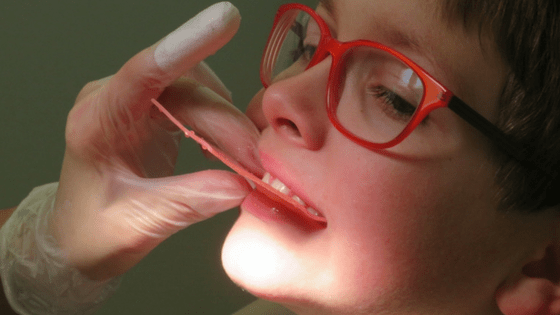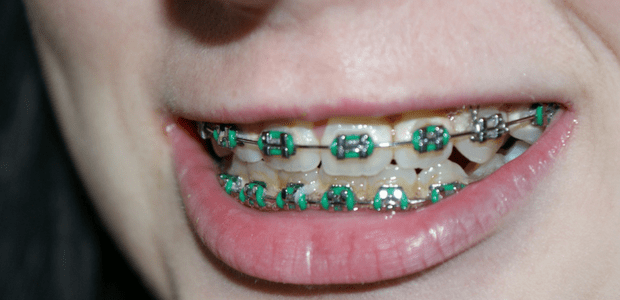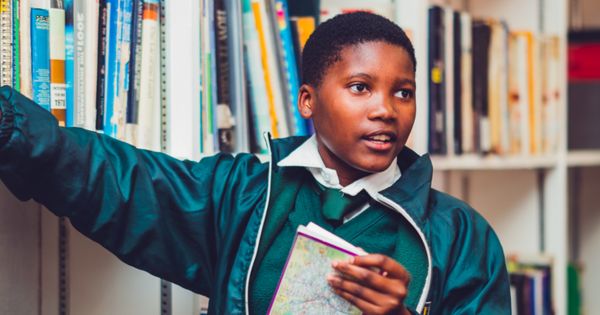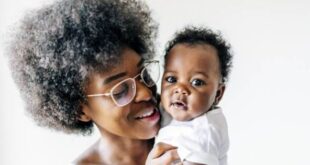According to a current study, wearing braces at the right time in life can not only help overcome jaw and teeth problems but also tone down debilitating issues like scoliosis in adulthood. Your dental health has an important bearing on the quality of your life. That is exactly why it is important to take immediate measures when the orthodontist detects errors in the position of your teeth.
As a parent, knowing what to expect for your child and how to prepare for braces can help calm your nerves to a significant degree.

Why Do Kids Need Braces?
Children need braces for a variety of different reasons, including overlapping or overcrowded or crooked teeth. “Bad bite” or malocclusion is often the cause of misalignment as well. Malocclusion occurs when there is a significant difference in the shapes and sizes of the upper and lower jaws. Whenever the top jaw is bigger and more prominent than the lower jaw, the condition is called an overbite. On the other hand, when the bottom jaw is bigger, it is known as an underbite.
Braces often address tooth or jaw problems that are caused by accidents, bad habits and losing baby teeth early on in life. Sometimes, certain jaw and teeth conditions are inherited, so if one or two people in the family wear braces, it’s quite likely that the kids will wear as well.
Sometimes, your child’s dentist is the first one to notice problems and recommend that you visit an orthodontist. The latter can then decide whether your kid needs braces or not. He/she will then go on to decide which device would be the most suitable.
Type of Braces
Braces rectify alignment problems by imposing even pressure on the teeth that gradually move them to a straighter position.
There are three basic types of braces that utilize elastic bands and wires to attach braces in place and align teeth. These are outlined below:
- Metal bands that adhere around the teeth
- Brackets that are adhered to the front of the teeth. This is the most common type for children.
- Brackets that are adhered to the rear side of the teeth.
Kids mostly require braces with brackets, rubber bands, and wires. Brackets tend to adhere to the teeth and are linked by rubber wands and a wire. This wire is strengthened slowly over time to ensure proper lining of the teeth. Usually, the rubber bands are available in attractive colors that children can select. While metal, clear and ceramic braces are used even today; people usually opt for lingual braces, which are set behind the teeth.
Clear detachable braces come fitted with plastic trays known as aligners, rather than rubber bands and wires. However, they are only right for specific conditions.
Some kids may require other devices as well, such as headgear. However, before you think anything further, please know that this is usually worn during the night! Headgear involves a wire shaped in the form of a horseshoe that adheres to the back teeth, lending stronger pressure to move the teeth to their proper position. The orthodontist may sometimes recommend removal of one or more teeth, in order to create more space in the mouth for better placement of braces.
Once your child has the braces on, your child will have to see the orthodontist every few weeks for monitoring and adjustments.
How long will your kid need to keep the braces on will depend on all the problems, that your orthodontist is attempting to fix. However, the average time is about two years.
After that, your kid might have to wear a specially made retainer, which is a small and firm piece of plastic fitted with metal wires or shaped like a mouthguard. The retainer prevents the teeth from moving back to their original, abnormal locations.

The First Orthodontist Visit
In the first session, the orthodontist thoroughly examines the child’s teeth, jaw, and mouth. He/she may even ask the kid to bite the teeth at the same time and ask questions about whether they are having problems chewing, swallowing, or having clicking sound on the jaw.
Sometimes it becomes necessary to take X-rays of the teeth and mouth to see if any permanent teeth are slated to come in and to get a general idea about how the teeth are aligned. They make even make a mold impression of the kid’s teeth by pressing the upper and lower sets of teeth onto a plate of sticky, nonreactive material. When the material has hardened, the replica of the child’s teeth becomes visible to allow the orthodontist to determine which treatment options will work best.
When to Visit the Orthodontist?
There isn’t any particular age for visiting the orthodontist for getting a second opinion about braces. Some kids go when they are six years old, while some go when they are 10. Many children even go when they are in their teen years. Sometimes adults may need orthodontic treatment. Experts believe that kids should visit an orthodontist as soon as their permanent teeth set in, which is around the age of 7 years. It is usually this age when issues like overcrowding and uneven bite become apparent.
Remember, starting the process early on doesn’t necessarily mean that the child has to wear braces immediately. It simply means that the orthodontist will be able to detect problems and decide on the best possible mode of treatment.

Are Braces Necessary?
The short answer to this question is yes. Correcting the manner in which your teeth fit together in the jaws is the prime motive of wearing braces. They can help fix various dental misalignment problems, including crossbites, underbites, and overbites. When left uncorrected, these issues can cause uneven jaw formation and even lead to irreparable abrasion on the teeth and gums.
Braces have been built specifically to address cosmetic errors, including missing or extra teeth, teeth that are too spaced apart or crowded, as well as problems caused by bad habits like tongue thrusting, thumb-sucking and premature loss of permanent teeth. Many of these habits, especially thumb-sucking and tongue thrusting eventually push the upper forward, leading to an overbite. Braces can help curb these problems before they explode to an intolerable level.
Preparations for the D-Day
The mold impressions have been taken, the appointment has been made and the time has come for getting braces. What next? Well, there are a couple of things you have to take care of before heading to the orthodontist’s office.
Firstly, you shouldn’t consume a lot of gum and candy on the day of the treatment. And even if you do, you should brush your teeth nicely. If your teeth aren’t sufficiently clean, your orthodontist may have to wipe them with a polishing paste, in order to allow proper attachment of the braces with the teeth.
Secondly, you should floss your teeth and even gargle using mouthwash before your appointment. This will make you feel happier and confident and even speed things up with the orthodontist.
If possible, do schedule a professional cleaning treatment with the dentist a couple of days before getting new braces, so that the teeth stay plaque-free and sparkling clean by the time you wear the orthodontic device.
After-Care
You can expect to experience a mild discomfort after the treatment. Your teeth may feel sensitive, and you may develop sores in the mouth from the new braces.
- Try chewing on soft, healthy foods with low sugar content such as soups, pasta, bananas and the flesh of the watermelon.
- It’s advisable to take over-the-counter medication, such as acetaminophen or ibuprofen to deal with the pain and discomfort in the jaws and mouth.
- In case, the sensitivity doesn’t vanish, or you continue to experience a high degree of discomfort, do call your orthodontist/dentist for a second opinion.
Choosing the Best Toothbrush for Braces
A recent report has shown that there is no real scientific evidence to suggest that a particular toothbrush is perfect for getting rid of plaque. However, using a toothbrush that fits your needs and offers easy access to the hidden spots of the mouth allows better cleaning and removes the build-up of plaque-causing bacteria.
The best toothbrush for braces should have the following features:
- Wide handle: A wide handle allows you to grasp the brush firmly and steadily, allowing more control over every brushing stroke.
- Soft bristles: Soft-bristled brushes do not wear down enamel, unlike hard-bristled ones. They can clean teeth without aggravating gums that are already sore from an orthodontics adjustment.
- Round-ended bristles: Experts have proven that bristles with brushes with round-ended bristles can protect oral tissue better.
To better know what kind of toothbrush is best for braces, refer to the detailed article here.

How Does Life Change After Wearing Braces?
With braces on, you are expected to take extra care of your mouth and teeth. Here’ a quick rundown of all the things you need to do on a regular basis:
- You will need to brush properly twice a day and even use water pick to remove the food particles trapped between the teeth and the braces.
- Brushing after meals is particularly important, as is daily flossing. Usually, the orthodontist will give a special flosser to use around the braces.
- Regular dental visits and checkups will be important to detect cavities and treat them in time.
- Kids wearing braces should avoid junk food like candy, gum, popcorn and sugary stuff as they can damage braces. Juices, soda, and aerated drinks can be problematic because they lead to tooth decay. Children with clear plastic aligners have to take them off when it is time to eat.
- Since braces impose pressure on the teeth, it is natural to feel uncomfortable every once in a while, and especially after the orthodontist has made adjustments. Taking pain relievers can help when this happens.
- Visit your orthodontist immediately if there is a loose wire in the braces that is poking the mouth. It’s recommended to use soft orthodontic wax to protect the mouth and gums from any sharp, abrasive parts on the braces.
Ending Note
Getting braces for the first time can be nerve-wracking of course, but fortunately, the fear of the unknown is actually the worst part! And the key to success is asking lots and lots of question. Additionally, you should prep yourself physically for the appointment to stay in good stead of the upcoming treatment. Remember, things are just going to get uphill from the time you put on braces, so it pays to be hopeful!
About The Author
Amelia is a writer/editor with an endless passion for bringing a lot of useful and trustworthy information to the community. She founded stayhealthyways.com, a blog dedicated to sharing quality articles related to health, nutrition, fitness, and beauty. As a typical introvert, Amelia is a perfectionist in work. At times of leisure, she reads, listens to music, chats with some close friends and walks with her pet.
 Kaboutjie SA Mommy Blogs by Lynne Huysamen
Kaboutjie SA Mommy Blogs by Lynne Huysamen





Thanks for making me understand the importance of the braces, I never thought about it before or rather know the benefits of it.
Very insightful!
I think a lot of people still don’t realize how important braces are if they are needed.